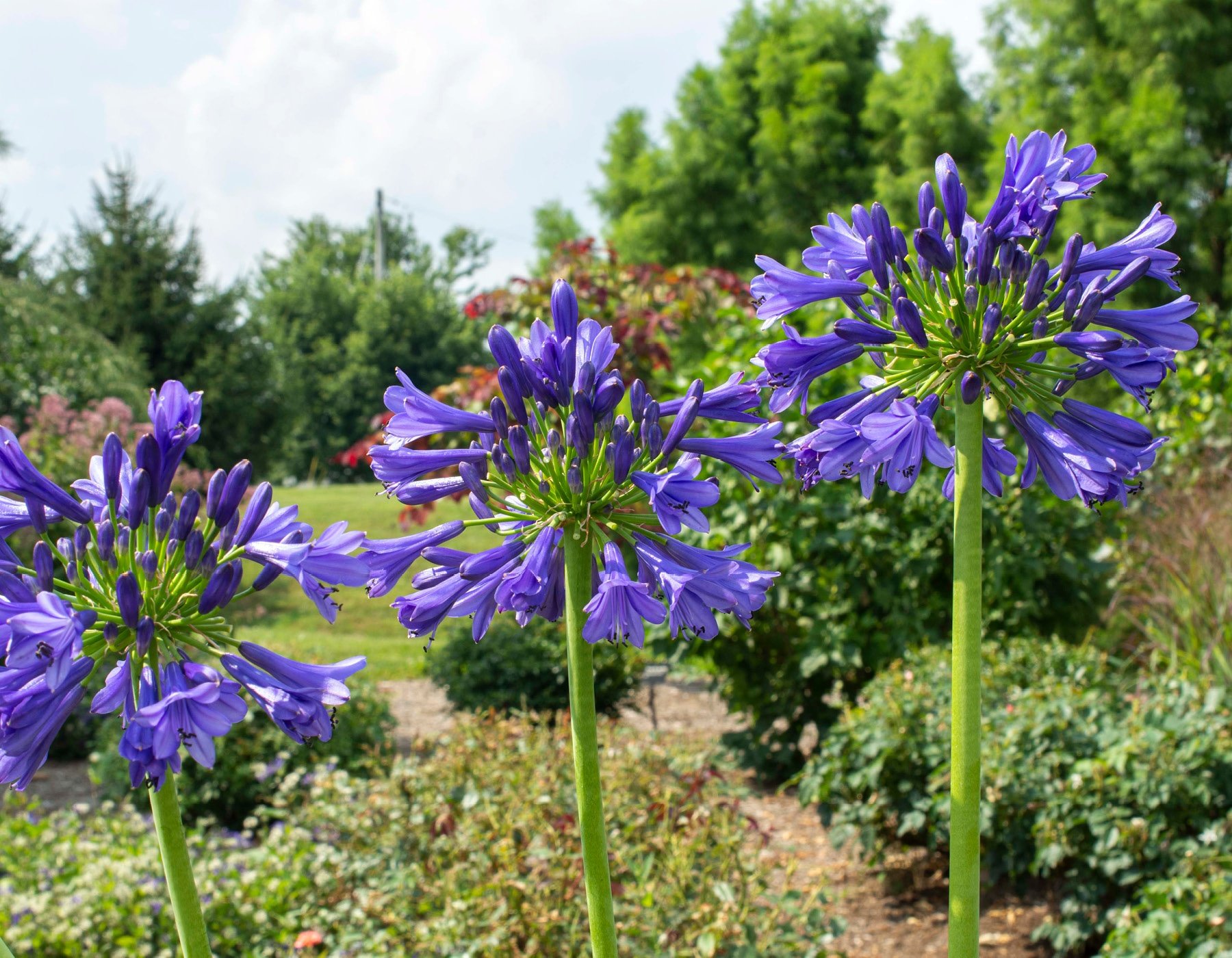Agapanthus Companion Plants: Perfect Pairings for Your Yard
Agapanthus Companion Plants: Perfect Pairings for Your Yard
Blog Article
Understanding the Art of Agapanthus Care: Vital Actions for Healthy And Balanced Growth and Lively Blooms
In the realm of horticulture, the cultivation of agapanthus stands as a gratifying endeavor for those that seek to support these elegant blooming plants. From selecting the appropriate range to grasping trimming methods, the journey towards growing thriving agapanthus plants is diverse and holds the vital to unlocking the complete possibility of these organic gems.

Choosing the Right Agapanthus Selection

When selecting the right Agapanthus selection for your garden, think about variables such as environment viability, flower color, and growth practice. Agapanthus, typically referred to as Lily of the Nile or African lily, comes in a range of shades ranging from tones of purple and blue to white. Pick a bloom shade that enhances your existing yard combination to create a harmonious landscape. Furthermore, think about the environment in your region to ensure the Agapanthus selection you choose can prosper in your particular conditions. Some varieties are extra forgiving of cool temperature levels, while others favor warmer environments. Comprehending the growth practice of various Agapanthus varieties is crucial for correct positioning within your garden. Some selections have a clumping development routine, suitable for borders or containers, while others have a more dispersing nature, suitable for ground cover or mass plantings. By carefully evaluating these aspects, you can select the perfect Agapanthus selection to enhance the elegance of your garden.
Perfect Growing Problems
Considering the ideal environmental demands is necessary for successful Agapanthus cultivation. Agapanthus prospers in well-draining dirt with a slightly acidic to neutral pH degree. When planting, choose an area that obtains full sunshine to partial color. In hotter climates, offering some mid-day color can prevent scorching of the fallen leaves. Agapanthus plants are delicate to cold temperature levels and need to be secured from frost during wintertime months.
To guarantee healthy development and vivid blossoms, plant Agapanthus bulbs at a deepness of regarding 2-4 inches and room them 8-12 inches apart. Mulching around the base of the plants assists retain wetness and reduces weed development.
Watering and Fertilizing Tips
Maintaining correct moisture degrees and giving essential nutrients are crucial elements in the treatment routine for Agapanthus plants. When it involves sprinkling Agapanthus, it is critical to strike an equilibrium. If overwatered, these plants favor constantly moist dirt yet are vulnerable to root rot. During the expanding season, water deeply once a week, guaranteeing the soil is well-draining to stop waterlogging. In hotter environments or during durations of dry spell, more constant watering may be required to keep the soil equally damp. Nonetheless, decrease watering in the wintertime to stop waterlogged problems.
Feeding Agapanthus is crucial for advertising healthy and balanced growth and respected flowers. Apply a well balanced plant food, such as a 10-10-10 formula, in the very early spring as brand-new growth emerges. By adhering to these watering and fertilizing pointers, you can guarantee your Agapanthus plants thrive and create dynamic, durable flowers.
Pruning Methods for Agapanthus
Trimming Agapanthus plants at the proper times and with proper techniques her explanation is essential for keeping their health and advertising optimal growth and blooming. The suitable time to prune Agapanthus is in late winter months or early springtime prior to new development arises. Begin by removing any yellowing or dead fallen leaves near the base of the plant. Cut them as close to the ground as feasible without damaging the emerging shoots.
Deadheading invested blossoms can additionally redirect the plant's energy right into creating even more blooms rather than setting seeds. If you desire to accumulate seeds for breeding, leave some blossoms to fully grown and dry on the plant.
Remember to utilize clean, sharp devices to make specific cuts and minimize the threat of presenting diseases. Agapanthus. Regular trimming will assist keep your Agapanthus looking neat and healthy while making certain an abundant display of beautiful blossoms
Managing Usual Bugs and Illness
After guaranteeing proper pruning techniques for Agapanthus, it is important to address typical insects and conditions that can affect the health and wellness and vitality of these plants. Agapanthus plants are normally sturdy yet can still succumb certain concerns. One typical pest that impacts Agapanthus is the Agapanthus gall midge. This tiny, orange fly lays its eggs in the foliage, causing distorted growth and flower buds that fall short to open up. To combat this parasite, prune and damage any afflicted plant parts and think about making use of insecticidal soap.
Furthermore, Agapanthus plants can experience from root rot if they are planted in inadequately draining soil. By being alert and taking timely activity versus illness and pests, you can help your Agapanthus plants prosper and generate vivid blossoms. Agapanthus.

Final Thought
To conclude, mastering the art of agapanthus care involves picking the ideal variety, offering optimal planting conditions, appropriate watering and fertilizing, proper pruning techniques, and attending to typical pests and conditions. By complying with these important actions, you can make sure healthy development and dynamic blossoms for your agapanthus plants. Keep in mind to on a regular basis keep an eye on and maintain your plants to promote their total well-being and long life.
To guarantee healthy and balanced growth and dynamic blooms, plant Agapanthus light bulbs at a depth of concerning 2-4 inches and space them 8-12 inches apart. By following these watering and feeding suggestions, read the article you can ensure your Agapanthus plants prosper and create vibrant, resilient blooms.
One usual pest that influences Agapanthus is the Agapanthus gall midget. In addition, Agapanthus plants can experience from root rot if they are planted in useful source inadequately draining pipes soil. By adhering to these vital actions, you can guarantee healthy and balanced development and vibrant flowers for your agapanthus plants.
Report this page